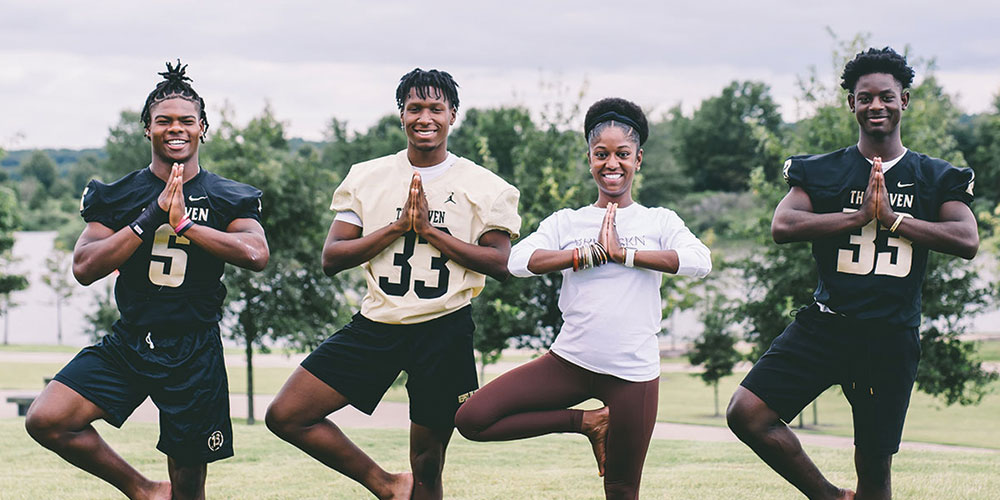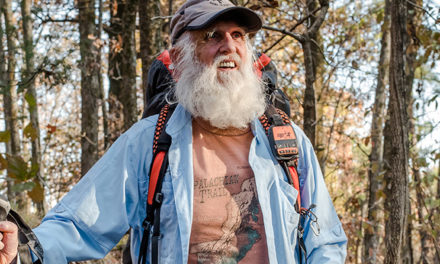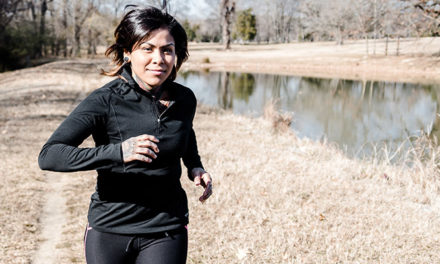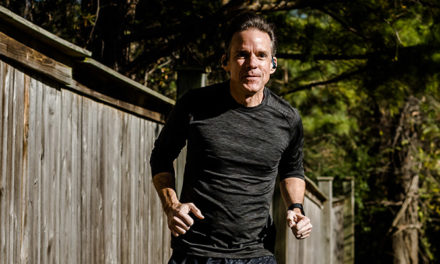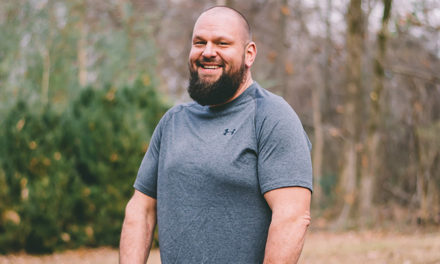When Shawandra Ford, 42, found yoga, it wasn’t the first time she’d fallen in love. Initially, it was Zumba. “I bought the skirt, and I was doing my little Zumba thing. I was like, ‘I’m gonna get my certification!’ — I didn’t,” she recalls. Then it was Pilates. “I bought the reformer and everything,” she says. But neither clicked with her the way yoga did, especially since she discovered it while grieving the loss of her mother.
Growth On and Off the Mat
She took her first class in 2013 at Life Time Fitness. Shawandra connected deeply with the signature sequences and repetitive nature of the Ashtanga style. The flow made sense and felt natural, but her practice has continued to teach Shawandra incredible lessons.
Getting swept up in the world around her and not knowing how to concentrate on and foster her own inner peace and joy caused Shawandra to make choices she wishes she hadn’t. “I think as a kid, because of my circumstances, I didn’t know what it was like to protect my boundaries,” she explains.
Realizing how critical it is to learn meditation and tune out the noise is what led Shawandra to find her path. The former long time Shelby County Schools administrator saw a serious need in neighborhoods where students don’t have access to the same resources as those who attend private or suburban schools. “The focus tends to be more so on academics, but what happens when our students can’t self-regulate?” Shawandra says.
Reaching the Next Generation
Once she earned her teaching certification in 2019, she began working with schools such as Vision Preparatory Charter School to bring yoga to youngsters. The pandemic had a different plan for her first academic year as a children’s yoga teacher with an emphasis on social and emotional learning.
Despite being in a virtual setting, Shawandra has witnessed the impact on students. She sees how they tap into breath work and stillness to channel calmness and center themselves. “It’s almost like second nature for them now. For me, I had to learn this at 30-plus. If they learn it early, they don’t have to go through all of the struggles I went through,” she says.
Positive affirmations are part of their practice as well. Shawandra often asks students to state one as they go through a sun salutation. “Kids don’t like to say positive things about themselves because they think other kids will laugh,” she says. “I explain to them how you see yourself is how others will see you. If you feel like you’re toxic or anything negative, that’s how other people are going to see you. It’s OK to let your light shine.”
Addressing Approachability
As evident through her youth work, Shawandra is passionate about bringing yoga to people it doesn’t typically reach, especially those who are Black and brown. She knows those communities may not be as familiar with yoga and can feel uncomfortable taking a class or worry that it doesn’t align with their spiritual beliefs. “…It doesn’t have to be about the religious part, but it’s OK if you just relax on your mat and just breathe and take a moment,” she says.
The lack of diversity in some class settings can add to the discomfort. “For the most part, every time I walked into a studio, I was maybe one of the few women of color,” says Shawandra. Wanting to create an unintimidating place where people who have a similar background to her would feel welcome, she recently opened her studio, Brwnskn Yoga, in Whitehaven, where she grew up.
Shawandra makes strides to close the wellness gap by leading weekly classes at the new studio including a special girls’ empowerment one on Saturdays. She also partners with the national nonprofit Girls on the Run to teach social and emotional learning to its Memphis chapter.
Her list of private clients is packed too, many of whom opt for solo instruction due to health or body image issues. “I try to keep those sessions as reasonable as possible because I also have to think about the community that I’m serving. I don’t want them to find something they like and then they get discouraged because they can’t afford it,” she says.
Whether she’s teaching one-on-one, via a screen, in a park, to her husband and two sons at home, or beyond, Shawandra never forgets her mission—making an impact on communities of color.
“For the most part, every time I walked into a studio, I was maybe one of the few women of color.”
By Alexandra McCray
Photo by Tindall Stephens

